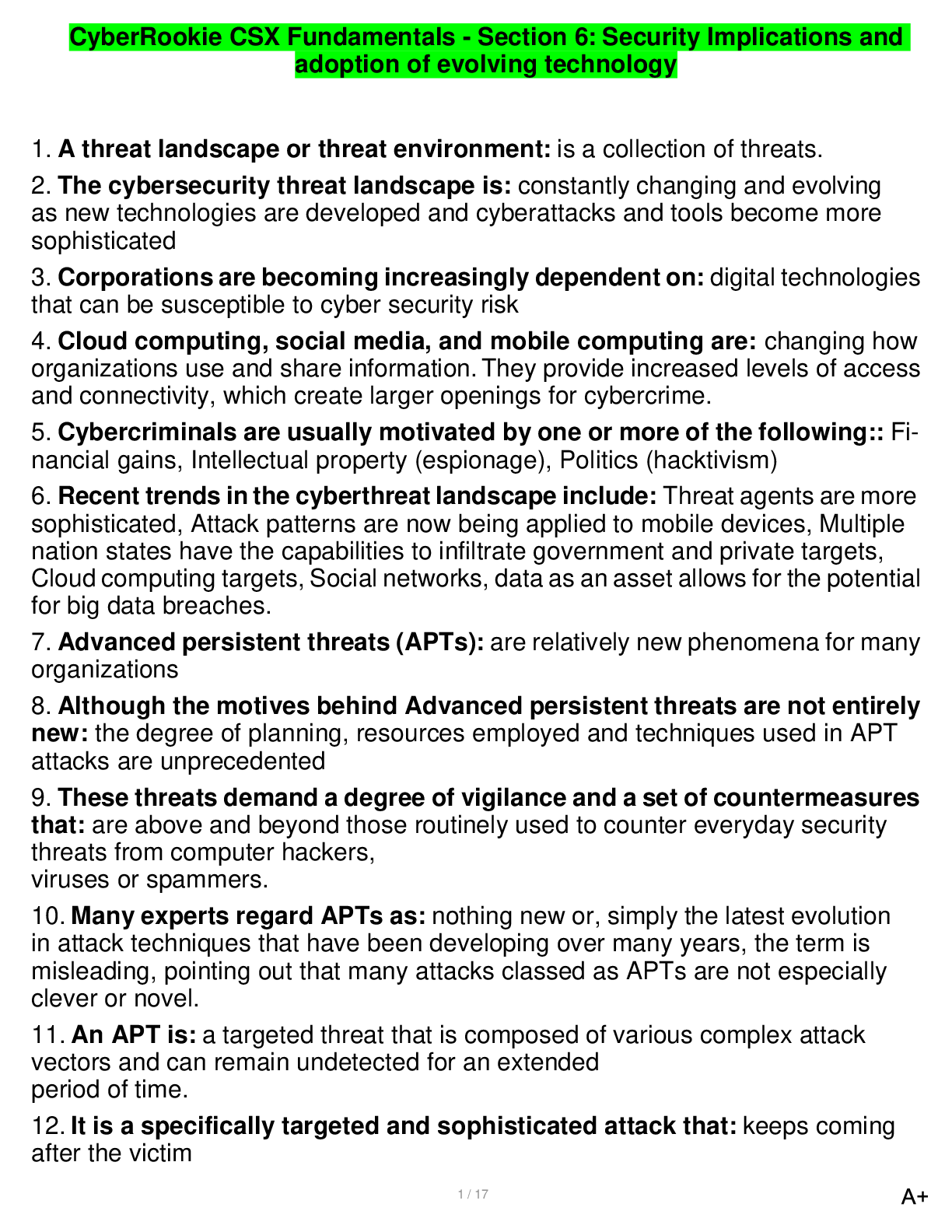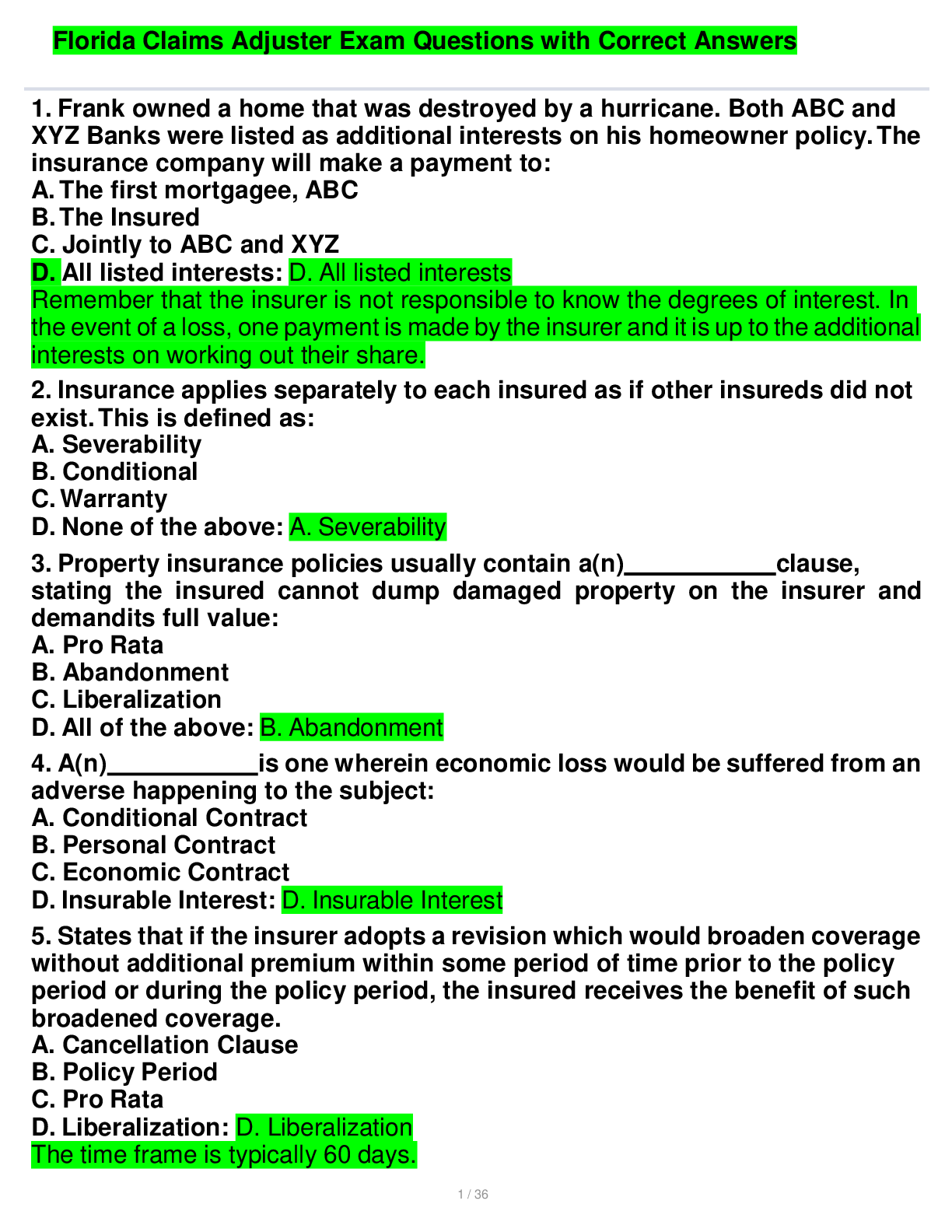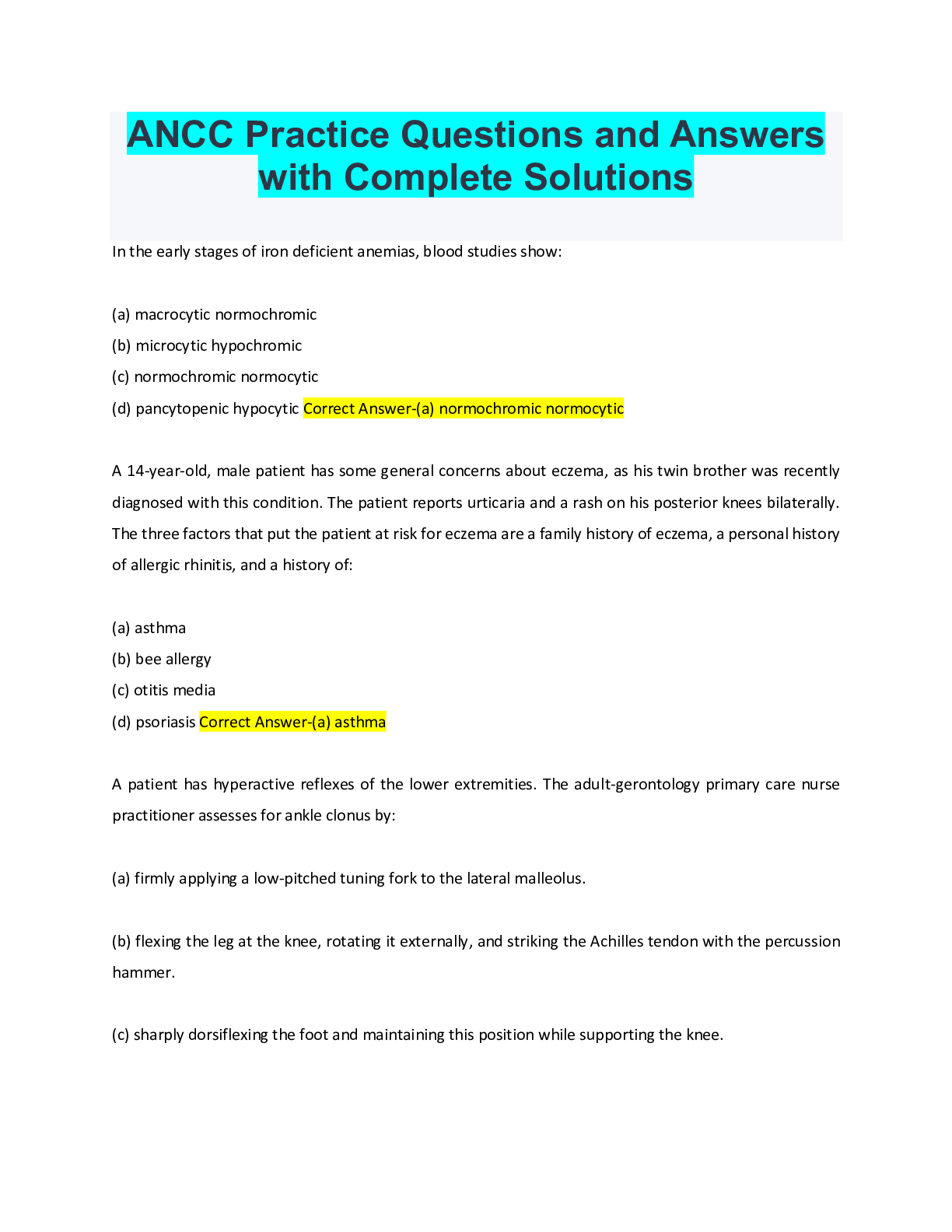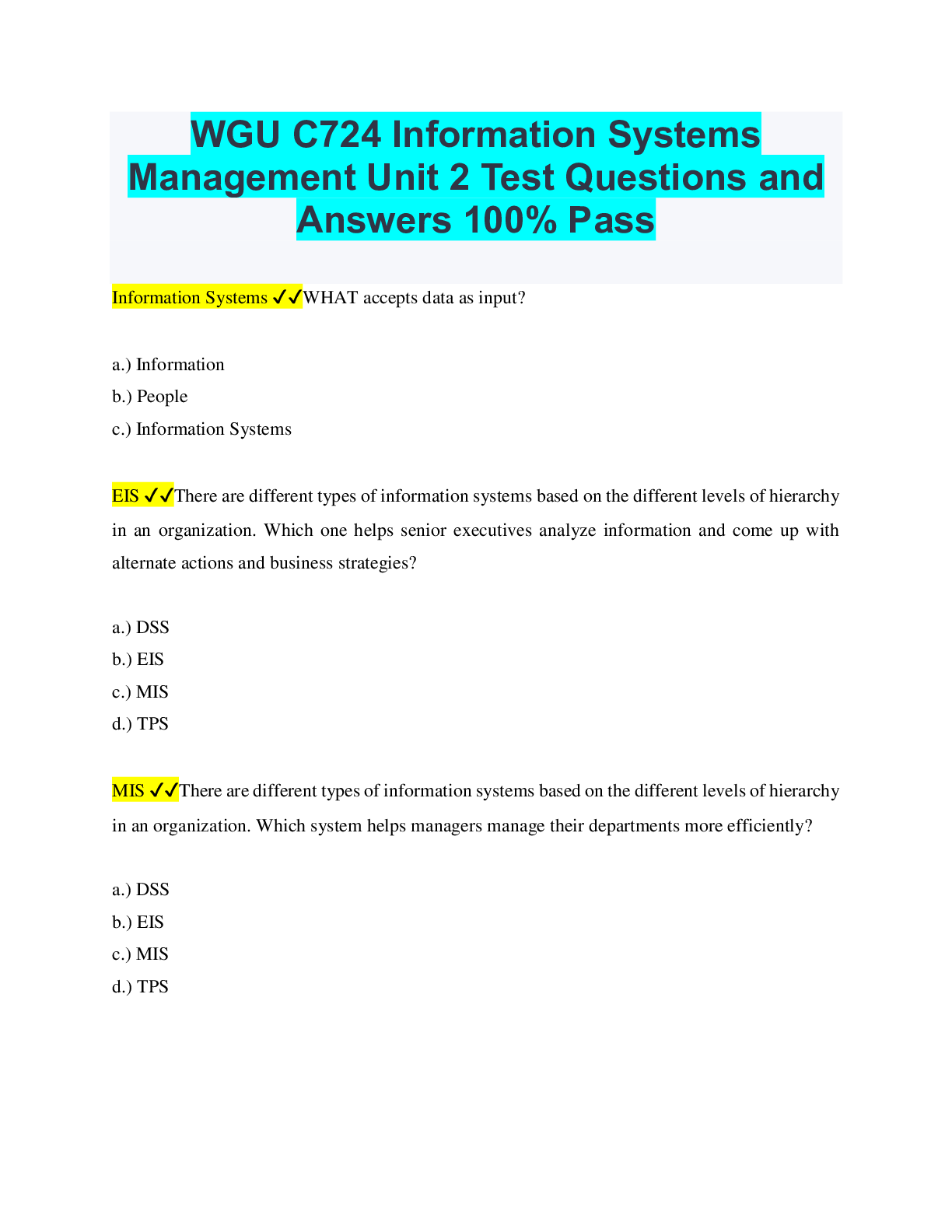Computer Science > QUESTIONS & ANSWERS > CyberRookie CSX Fundamentals - Quiz 104 questions- WITH COMPLETE ANSWERS (All)
CyberRookie CSX Fundamentals - Quiz 104 questions- WITH COMPLETE ANSWERS
Document Content and Description Below
CyberRookie CSX Fundamentals - Quiz 104 questions- With Complete Answers 1 / 7 1. Three common controls used to protect the availability of information are: Redundancy, backups and access controls ... 2. Governance has several goals, including: Providing strategic direction, Ensuring that objectives are achieved, Verifying that organizational resources are being used appropriately, Ascertaining whether risk is being managed properly. 3. According to the NIST framework, which of the following are considered key functions necessary for the protection of digital assets?: Protect, Recover, Identify 4. The best definition for cybersecurity?: Protecting information assets by addressing threats to information that is processed, stored or transported by interworked information systems 5. Cybersecurity role that is charged with the duty of managing incidents and remediation?: Cybersecurity management 6. The core duty of cybersecurity is to identify, respond and manage: risk to an organization's digital assets. 7. A threat: is anything capable of acting against an asset in a manner that can cause harm. 8. A asset: is something of value worth protecting. 9. A vulnerability: is a weakness in the design, implementation, operation or internal controls in a process that could be exploited to violate the system security 10. The path or route used to gain access to the target asset is known as a: attack vector 11. In an attack, the container that delivers the exploit to the target is called- : payload 12. Policies: communicate required and prohibited activities and behaviors. 13. Rootkit: is a class of malware that hides the existence of other malware by modifying the underlying operating system. 14. Procedures: provide details on how to comply with policies and standards. 15. Guidelines: contain step-by-step instructions to carry out procedures. 16. Malware: also called malicious code, is software designed to gain access to targeted computer systems, steal information or disrupt computer operations. 17. Standards: are used to interpret policies in specific situations. 18. Patches: are solutions to software programming and coding errors. [Show More]
Last updated: 1 year ago
Preview 1 out of 7 pages

Buy this document to get the full access instantly
Instant Download Access after purchase
Add to cartInstant download
We Accept:

Reviews( 0 )
$9.00
Document information
Connected school, study & course
About the document
Uploaded On
Nov 01, 2022
Number of pages
7
Written in
Additional information
This document has been written for:
Uploaded
Nov 01, 2022
Downloads
0
Views
117


.png)
.png)











